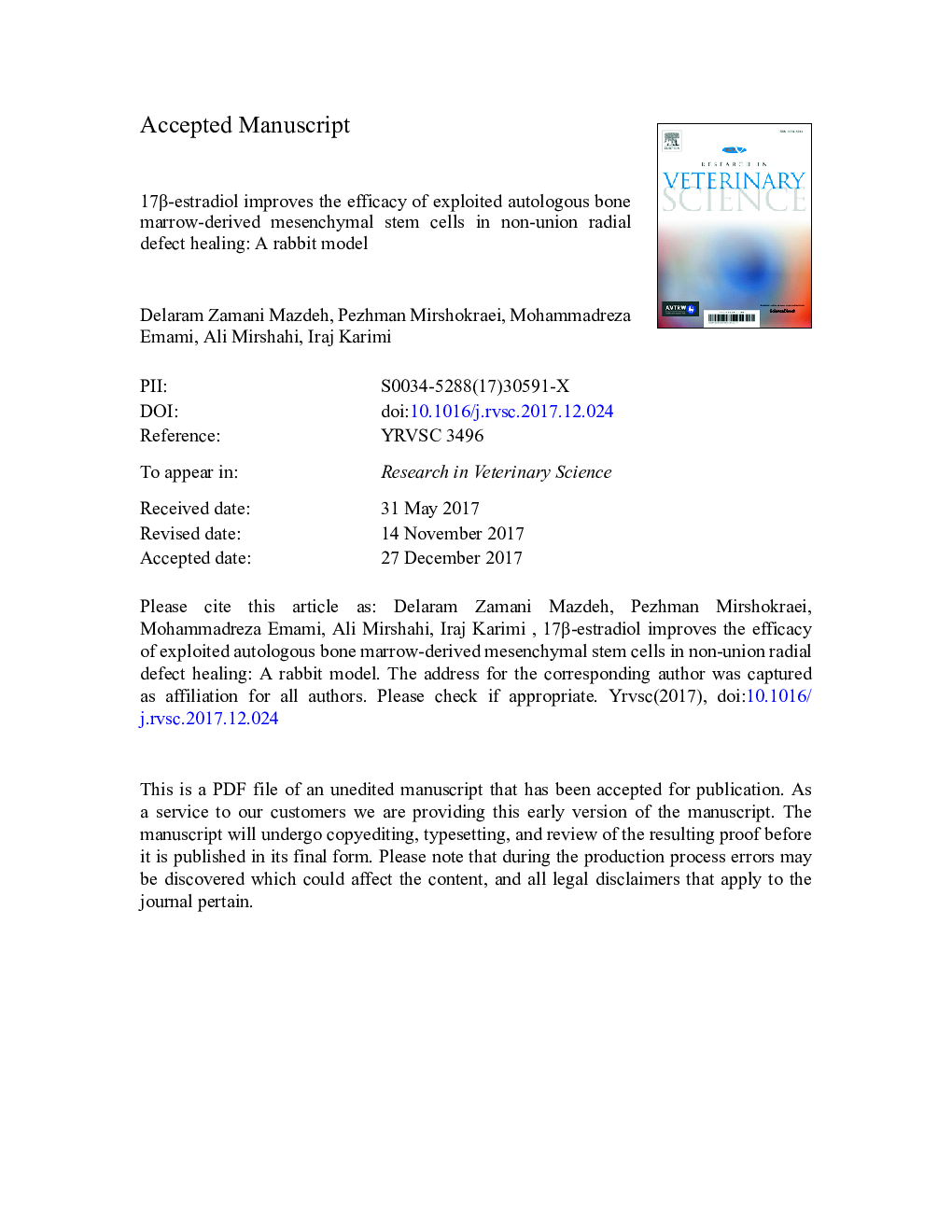| Article ID | Journal | Published Year | Pages | File Type |
|---|---|---|---|---|
| 8503990 | Research in Veterinary Science | 2018 | 27 Pages |
Abstract
Exploiting mesenchymal stem cells (MSCs) appears to be an appealing alternative to the traditional clinical approach in the treatment of non-union bone defects. It has been shown that 17β-estradiol improves the osteogenesis and proliferation potential of the MSCs via estrogen receptors. We investigated the effect of 17β-estradiol on exploiting autologous BMSCs (bone marrow-derived MSCs) for the purpose of healing of radial non-union segmental defect in rabbit. Twenty rabbits were divided into 4 experimental groups: 1. Control group; 2. MSC treatment group; 3. 17β-estradiol (E2) treatment group; and 4. E2 + MSC treatment group. Isolated BMSCs were seeded in a critical-sized defect on the radial mid-diaphysis that was filled with autologous fibrin clot differently in 4 groups: 1. intact fibrin clot (control); 2. Fibrin clot containing MSCs; 3. Estradiol; and 4. E2 and MSCs. Defect healing was assessed by radiological (week 0, 2, 4, 6, 8 and 10) and histopathological evaluation (week 10). Radiological evaluation data demonstrated that quantities for the E2 + MSC group were significantly the greatest in comparison with the other groups at week 4 to 10 inclusive. Moreover, Histopathological evaluation indicated that the E2 + MSC group had the highest score which was significantly greater than the E2 group and the control group (P < 0.05). In-vivo application of in situ 17β-estradiol provides the seeded BMSCs with improved osteogenic capacity in tandem with an accelerated rate of bone healing. This obviously more efficient approach that yields in a shorter time appears to be promising for future cell-based clinical treatments of the non-union bone fractures.
Related Topics
Life Sciences
Agricultural and Biological Sciences
Animal Science and Zoology
Authors
Delaram Zamani Mazdeh, Pezhman Mirshokraei, Mohammadreza Emami, Ali Mirshahi, Iraj Karimi,
